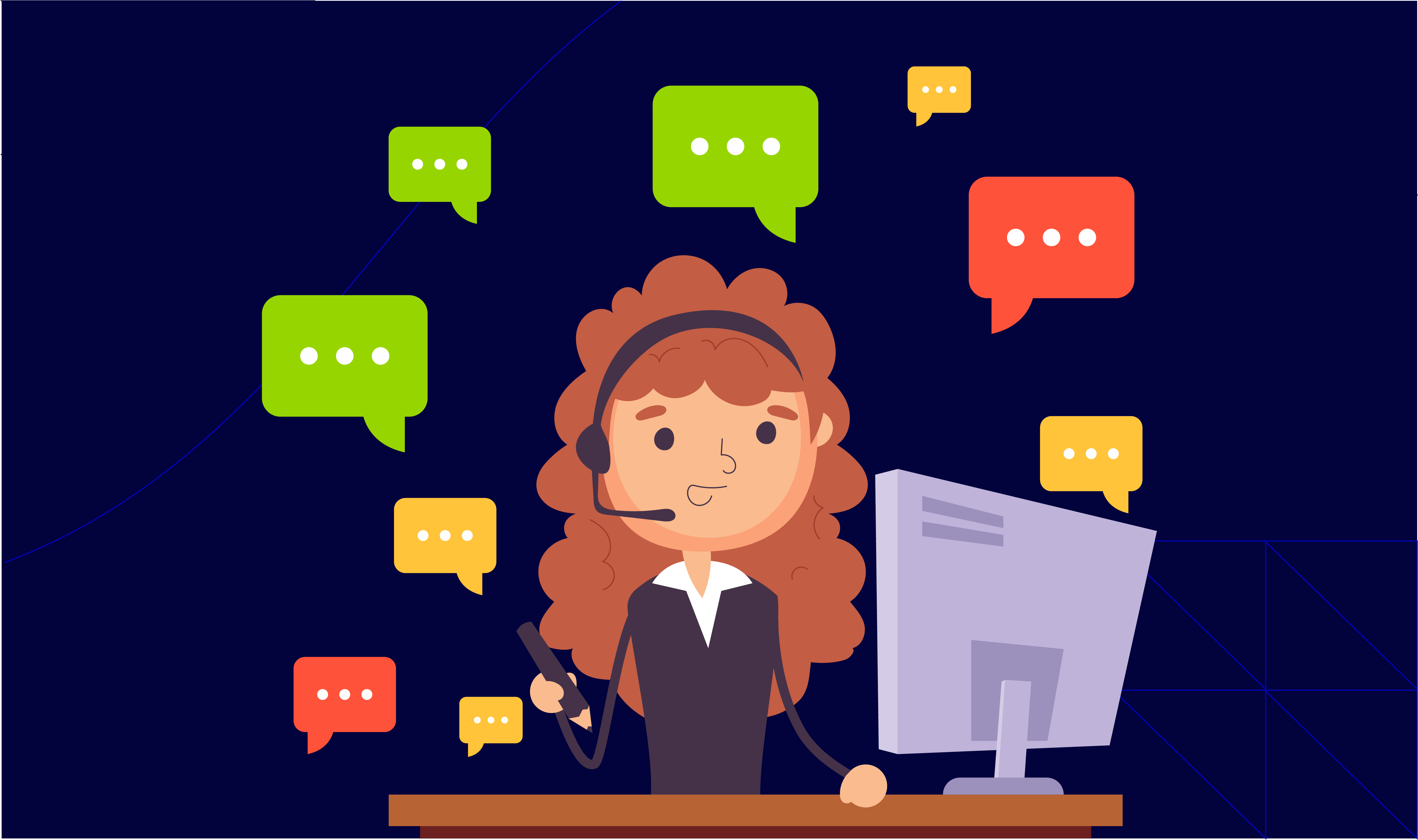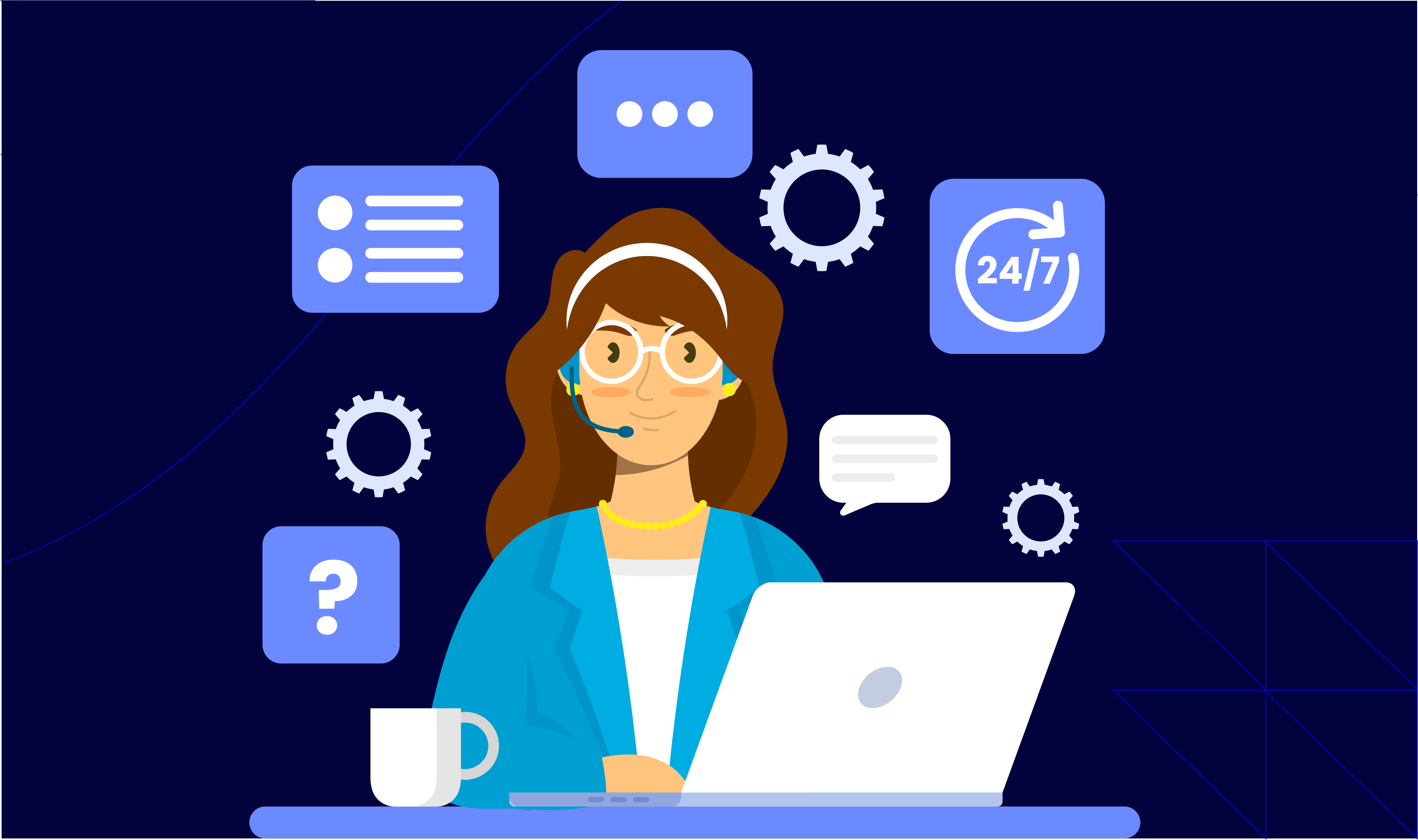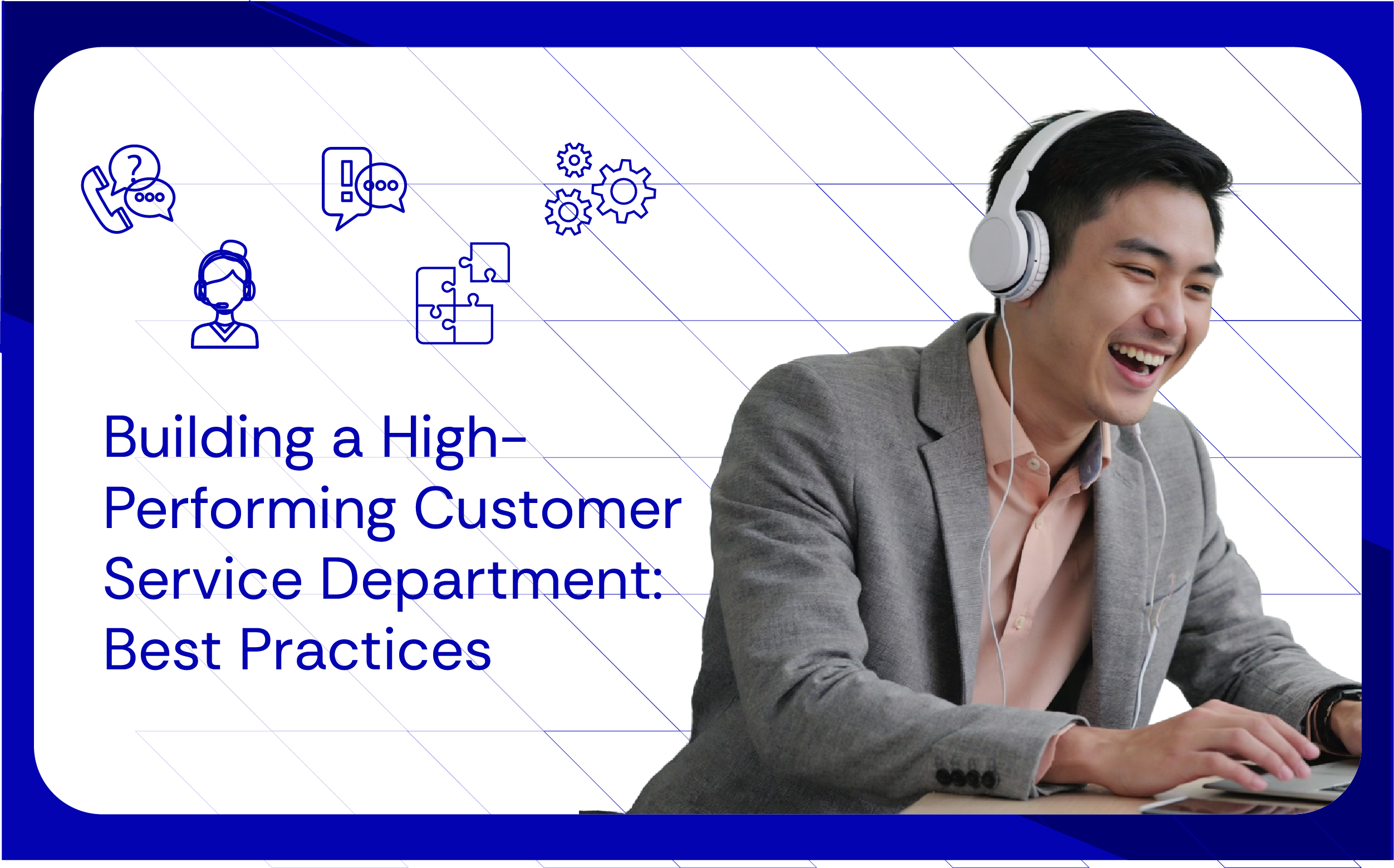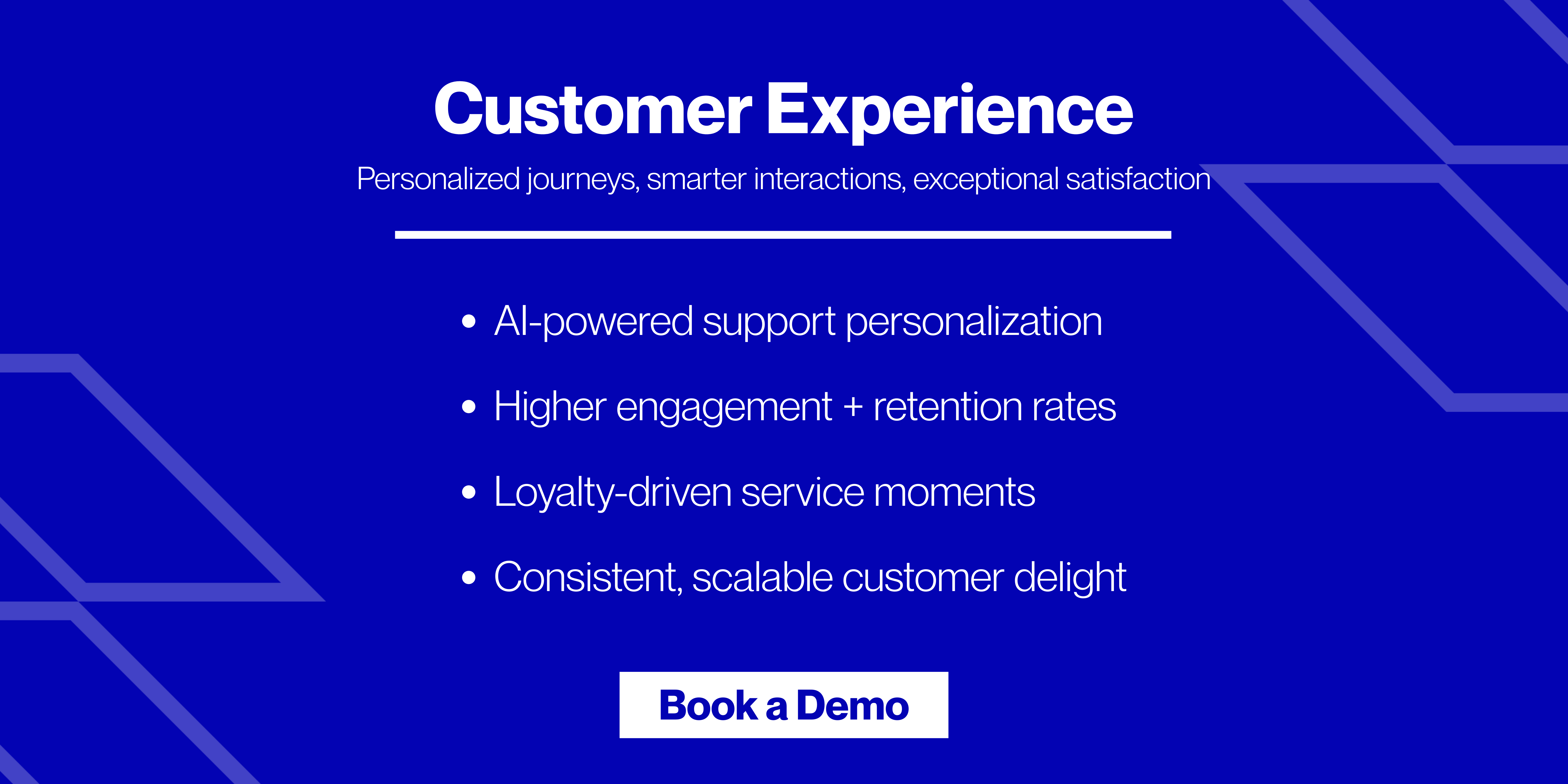Key Takeaways
- A high-performing customer service department is built on strong people skills, streamlined processes, and clear performance metrics.
- Defining clear customer service tiers helps route inquiries efficiently and improves resolution times.
- Ongoing training, smart technology, and a culture of ownership are essential for scaling support without losing quality.
- When support agents feel empowered and equipped, they create better outcomes for both customers and the business.
- For consumer brands and D2C companies in the US, UK & Australia, CX leaders who align talent, tools and structure can reduce churn, improve CSAT and drive revenue growth.
What Is a Customer Service Department?

A lot of businesses still think their customer service department is just the folks handling refunds or troubleshooting login issues. But here’s the truth: your customer service department is the heart of your customer experience.
It’s the team customers rely on when they’re confused, frustrated, or just need a little help navigating your product or service. It’s often the first human touchpoint they experience, and what they remember long after a purchase is made.
Stats back up the importance of customer service departments as well:
- 80% of customers believe that a brand’s customer service is just as important as the product it sells.
- Nearly 60% of customers studied by Zendesk said that customer service was important for them to feel brand loyalty.
- Research by Hubspot revealed that 93% of customers are likely to make repeat purchases if a brand offers great customer service.
A great customer service department does more than support. It drives loyalty, powers word-of-mouth marketing, and becomes a competitive advantage you can’t afford to ignore. So, whether you’re just starting to build out your team or you’ve had a department in place for years, it’s worth asking: “How can I build a high-performing customer service department?” Let’s dive right in!
For senior CX leaders, these numbers highlight the financial weight of customer service. Great service isn’t just support, it’s a revenue booster.
The Core Functions of Customer Service
A high-performing customer service department wears a lot of hats, and the most successful ones nail a handful of core functions that all work together to create a customer experience solutions people actually remember. Here’s what those core functions look like:
- Support: At the most basic level, your team is there to help customers use your product or back office support service and solve any issues that pop up.
- Resolution: A strong customer service function doesn’t just “fix” the issue. It resolves it with empathy, urgency, and care.
- The voice of the customer: Customer service sits at the perfect intersection of product and experience. Every conversation is a chance to spot trends, surface bugs, flag confusing messaging, or highlight feature requests.
- Education: One of the most scalable ways to support customers is by giving them the tools to succeed on their own. This includes resources like knowledge bases, help center articles, and step-by-step videos.
- Retention: Customers stay back where they feel supported and where they feel like someone’s got their back. By consistently showing up with helpful, empathetic service, your team builds the kind of loyalty that can’t be bought in any other way. According to Bain & Company, increasing retention rates by just 5% can boost profits by 25–95%. That’s why empathetic, reliable service is non-negotiable.
Understanding Customer Service Tiers
Not every issue is created equal. That’s where customer service tiers come into play. Tiers help you organize your support in a way that gets customers the right help faster, while making life way easier for your team. Here’s how they work:
- Tier 0 (Self-Service) — This is your first line of defense, before a customer even submits a ticket. It includes things like FAQs, help center articles, troubleshooting guides and chatbots with smart responses.
- Tier 1 (Frontline Support) — These are your generalists. They handle the bulk of incoming requests, such as billing information updates, order status querie,s and onboarding questions. Tier 1 agents are trained to answer quickly, clearly, and kindly. They’re also the gateway to Tier 2 — knowing when to escalate is just as important as knowing how to solve a problem.
- Tier 2 (Technical or Specialized Support) — Tier 2 agents take on more complex issues that Tier 1 can’t resolve. These include system bugs, integration issues, advanced troubleshooting, and product configuration. These agents usually have more experience or specialized product knowledge.
- Tier 3 (Engineering or Executive Escalation) — This tier is reserved for rare, high-stakes issues, like security breaches, outages, VIP client escalations, or anything that requires engineering or leadership-level decisions.
Why bother with all these tiers? Here’s why a tiered system is worth every bit of setup:
- It gets customers to the right person, faster
- It reduces burnout for your top talent
- It improves response and resolution times
- It helps you track and optimize support costs
If you want your customer service department to scale with your business and not buckle under pressure, you need structure. For growing consumer brands, a tiered system helps scale service operations without increasing costs.
Best Practices to Build a Customer Service Department That Performs

The best support teams don’t just answer questions, they elevate the entire customer experience. They’re efficient, empathetic, and fully in tune with your business goals. Ready to build that kind of team? Follow these best practices:
1. Hire for Soft Skills First
A calm, level-headed response when a customer is losing it is priceless. Yes, experience helps. But the best customer service reps are the ones who inherently can:
- Stay cool under pressure
- De-escalate with empathy
- Read between the lines
- See a complaint as an opportunity, not a burden
Pro tip for CX leaders: use roleplay scenarios in interviews to identify agents with high emotional intelligence.
2. Invest in Continuous Training
A solid onboarding program is a great start, but a high-performing team needs continuous development in the form of:
- Regular training on new features and product updates
- Monthly refreshers on communication and soft skills
- Workshops on efficiency tools, internal systems, and cross-functional collaboration
Invite folks from product, marketing, or sales to run “mini-teach-ins” for your support team. The more context your agents have, the more confident (and helpful) they’ll be in every interaction. For VP and Director level leaders, investing in training reduces churn, increases resolution accuracy and strengthens team culture.
3. Set Clear and Visible KPIs
What does success look like in your department? If your team doesn’t know, they’re flying blind. Here are the key metrics your customer service department should be tracking:
- First Response Time – How fast do you reply?
- First Contact Resolution – Are you solving problems the first time around?
- Customer Satisfaction Score (CSAT) – How happy are customers after an interaction?
- Net Promoter Score (NPS) – Would customers recommend your company to a friend? Bain research shows promoters have a lifetime value which is 6–14x higher than detractors.
- Average Resolution Time – How long does it take to fully fix an issue?
However, remember that while it’s good to track KPIs, it is great to also review performance with the team. Celebrate the wins, discuss what can improve, and create an open feedback loop.
4. Use Technology to Work Smarter, Not Harder
Equip your team with tools that make their lives easier—and their service faster:
- Centralized helpdesk: Tools like Zendesk or Freshdesk help keep everything in one place
- CRM integration: Connect customer profiles to tickets so your team has full context
- Smart automation: Use it to auto-tag, assign, and prioritize tickets based on keywords or urgency
- AI assistants: AI assistants for FAQs (but always with human handover)
5. Create a Culture of Ownership
When agents feel ownership over the customer experience, everything changes. They dig deeper. They follow up. They care. Here are some ways to build that culture:
- Give agents permission to take initiative
- Encourage them to flag recurring problems to product or ops teams
- Celebrate when someone goes above and beyond—not just when they hit a KPI
- Build feedback into every level of the organization
Practical step: allow agents to resolve low-value issues without approvals as empowerment increases CSAT.
How to Scale Without Losing the Personal Touch

Scaling is exciting… until it starts to feel like you’re losing what made your customer service special in the first place. Here’s how to scale your customer service department without turning into a cold, impersonal support machine:
- Lean on tier 0 to free up agent time: The more your team grows, the more questions come flying in—and not all of them need a human response. That’s where Tier 0 comes in handy. This isn’t about pushing people away, it’s about empowering them to find quick answers when they want them and making space for your agents to focus on more meaningful conversations that actually need a human touch.
- Use customer data well: You should know who your customers are. Make it easy for agents to access information like recent orders, past interactions, preferences or special requests, and notes from previous agents.
- Celebrate “wow” moments and share them: Want to keep the personal-touch energy alive as your team scales? Make it part of your culture.
- Shout out to agents who turned a rough situation into a loyal customer.
- Share stories in your team Slack channel or monthly meetings.
- Turn great moments into mini case studies or onboarding examples.
Not only does this boost morale, but it reminds everyone why we do this work and how powerful just a little extra effort can be.
Scaling doesn’t mean losing empathy. For consumer brands, the challenge is building efficiency while preserving the human touch that keeps customers loyal.
Build a Customer Service Department That Grows With Your Business

If you’re thinking about how to build or scale a high-performing customer service department, don’t just focus on volume or speed. Focus on experience. The right structure, the right people, and the right systems can turn your support team into a serious driver of business growth.
But what happens when you’re ready to grow fast but don’t want to compromise on quality? That’s where we come in.
At Atidiv, we help consumer brands and D2C companies in the US, UK & Australia with customer experience outsourcing that actually feels in-house. Whether you need Tier 1 agents, AI-powered workflows, or help setting up an omnichannel customer experience, we’ve got you covered.
- Scalable support that flexes with your growth
- Agents trained both in empathy and efficiency
- AI-enhanced tools that streamline without losing the human touch
- Real partnership, not just plug-and-play outsourcing
- Strategic partnership that empowers VPs and Directors to transform service into a competitive advantage
Partner with Atidiv and scale smarter.
FAQs On Customer Service Department
1. What are the main functions of a customer service department?
The key functions include providing support, resolving issues, gathering feedback, retaining customers, and educating users. Together, these roles help create seamless and satisfying customer experiences.
2. What are customer service tiers, and why do they matter?
Customer service tiers categorize support based on issue complexity—from self-service and frontline help to technical and executive-level support. This structure improves efficiency, reduces resolution time, and prevents agent burnout.
3. How can I improve agent productivity in my customer service department?
Equip your team with the right tools, training, and resources. Integrations, clear processes, and access to customer data help agents work faster and deliver better service.
4. What KPIs should I track for customer service performance?
Key metrics include first response time, first contact resolution, CSAT, NPS, and average resolution time. These KPIs help you monitor quality and identify areas for improvement.
5. Can outsourcing my customer service department help maintain performance while scaling?
Yes—partnering with the right CX provider gives you expert talent, technology and scalability without sacrificing customer experience.

